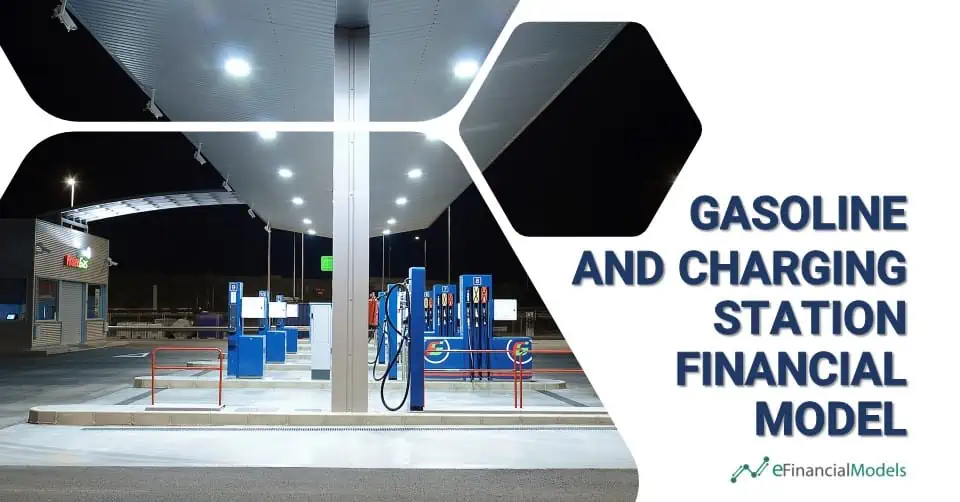Car Repair Shop Financial Model (10+ Yrs DCF and Valuation)
The Car Repair Shop Fin. Model (DCF and Valuation) is a comprehensive tool designed to analyze the financial aspects of an automotive repair business. It incorporates key components such as revenue sources, operating expenses, service pricing, customer volume, and financial projections. This model provides insights into the financial performance of the repair shop, enabling informed decision-making, budgeting, pricing strategies, and growth planning.

The Car Repair Shop Fin. Model (DCF and Valuation) is a comprehensive tool designed to analyze the financial aspects of an automotive repair business. It incorporates key components such as revenue sources, operating expenses, service pricing, customer volume, and financial projections. This model provides insights into the financial performance of the repair shop, enabling informed decision-making, budgeting, pricing strategies, and growth planning.
Key Components:
- Revenue Sources: The model assesses revenue streams from services such as repairs, maintenance, diagnostics, parts sales, and other automotive services offered by the repair shop.
- Operating Expenses: These include costs for labor, parts and supplies, rent, utilities, insurance, marketing, and other operational expenditures required to run the repair shop.
- Service Pricing: The model considers competitive market rates and the cost of labor and materials to determine optimal service pricing that ensures profitability while remaining attractive to customers.
Key Benefits:
- Informed Decision Making: The car repair shop financial model empowers shop owners to make informed decisions regarding pricing strategies, service offerings, marketing campaigns, and resource allocation.
- Budgeting and Cost Control: By providing a comprehensive overview of expenses and potential revenues, the model assists in budgeting and effective cost control measures.
- Pricing Strategy Optimization: The financial model aids in optimizing pricing strategies by considering both costs and competitive market rates, ensuring profitability and customer appeal.
- Growth Planning: Financial projections generated by the model support growth planning, allowing shop owners to assess the potential outcomes of expanding services, or hiring additional staff.
In summary, the car repair shop financial model offers valuable insights into the financial performance of an automotive repair business. It supports informed decision-making, budgeting, pricing strategies, and growth planning, all of which contribute to the success and profitability of the repair shop operation.
——————————————————————————————————————–
MODEL GUIDELINES
So, a quick overview of the model, in the contents tab you can see the structure of the model and by clicking on any of the headlines to be redirected to the relevant worksheet.
On the manual tab you can feed the general information for the model such as: project name & title, responsible, timeline of the model and date and currency conventions.
Additionally, there is a description of the color coding of the model in the same tab. Inputs are always depicted with a yellow fill and blue letters, call up (that is direct links from other cells) are filled in light blue with blue letters while calculations are depicted with white fill and black characters.
There is also color coding for the various tabs of the model. Yellow tabs are mostly assumptions tabs, grey tabs are calculations tabs, blue tabs are outputs tabs (that is effectively results or graphs) and finally light blue tabs are admin tabs (for example: the cover page, contents, and checks).
Moving on to the Inputs: detailed inputs for revenues such as car visits and pricing per service, costs splits between direct costs (direct labor costs, cost of materials) and indirect costs (such as admin staff, outsourced staff, insurance, advertising & promotions as well as other costs), working capital (receivables, payables, and inventory), fixed assets and capex (split into start up investment and new maintenance capex), debt & equity financing as well as valuation assumptions (such as discount rates used in the weighted average cost of capital).
In the summary tab you can see a high-level report with the main metrics and value drivers of the model. It can be readily printed on one page for your convenience.
Calculations: this is where all calculations are performed. The revenues are calculated based on the car visits and price per service offered and deducting the operating costs adjusted for inflation the operating profit is resulting. Based on the assets financed and the gearing of the financing the interest and depreciation are occurring. By using the working capital assumptions, the impact of the business cycle is presented. Finally, depending on the level of the investment considered the relevant debt financing is calculated (Long term debt and overdraft).
In the Outputs tab: everything is aggregated here into the relevant statements: profit and loss, balance sheet and cash flow.
Moving to the Valuation tab, a valuation is performed by using the free cash flows to the firm and then a series of investment metrics are presented (Net Present Value, Internal Rate of Return, Profitability Index, Payback Period, Discounted Payback Period, Sensitivity Analysis).
In the Graphs tab: Various graphs present the business metrics, revenues, operating costs, and profitability. Then multiple charts present the working capital, debt & equity along with cash, assets, and cash flows which results in a valuation on a project basis as well as on an equity basis together with the feasibility metrics.
In the Break-Even tab, you can find a break-even analysis and see how many sales you need to break even.
Sample Plan: a sample short business plan wording is also provided which you can use as a base for writing your own business plan.
Checks: A dedicated worksheet that makes sure that everything is working as it should!
Important Notice: Yellow indicates inputs and assumptions that the user can change, blue cells are used for called up cells, and white cells with black characters indicates calculation cells.
Similar Products
Other customers were also interested in...
Start Up Car Park Excel Model and Valuation
This detailed, yet easy to use three statement financial model will allow you to calculate your busi... Read more
Online Car Rental – 3 Statement Financial Mo...
Online Car Rental Platform Business Plan Model is a perfect tool for a feasibility study on launchin... Read more
Electric Vehicle (EV) Charging Station Financial M...
Electric Vehicle (EV) charging Station FM helps user asses financial viability of setting up and ope... Read more
Electric Vehicle (EV) Charging Station Financial M...
With this comprehensive 5- or 10-year monthly tool, investors can assess the viability of setting up... Read more
Car Rental Business Financial Model
This Car Rental Business Financial Model Template in Excel offers an ideal basis for developing a bu... Read more
Car Wash Financial Model – Dynamic 10 Year B...
Financial Model providing a dynamic up to 10-year financial forecast for a startup or existing Car W... Read more
Gasoline and Charging Station Financial Model
Investors can assess the viability of setting up and investing in gasoline stations with a charging ... Read more
Parking Garage Financial Model – Dynamic 10 Year...
This Parking Garage Financial model Template enables users to get into details of every step of a Pa... Read more
Driving School – 5 Year Financial Model
Financial Model providing an advanced 5-year financial plan for a startup or operating Driving Schoo... Read more
Car Rental Company Financial Model – Dynamic 10 ...
A Financial model presenting a business scenario of a Car Rental Company which offers Daily Car Rent... Read more
You must log in to submit a review.



























